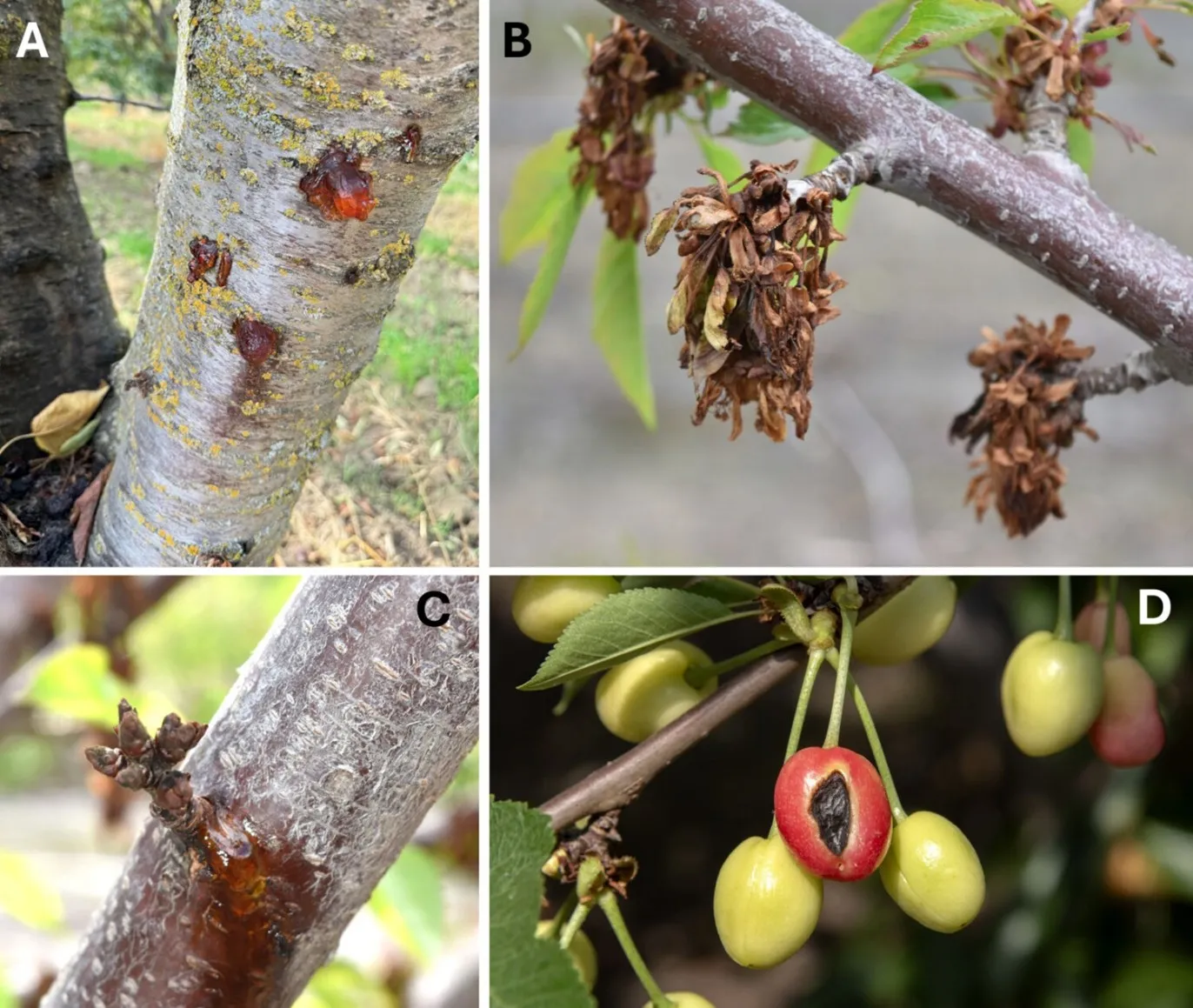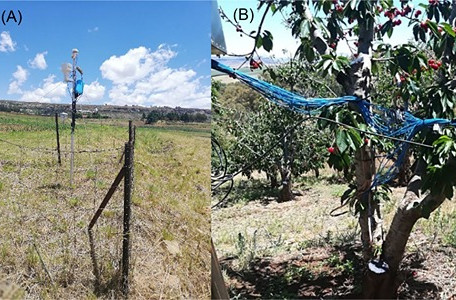The selection of new cultivars with traits of resistance to biotic stresses is increasing, especially in response to the demand for new selections with high-quality fruits that are also resilient to stresses. The main purpose of this is to reduce the frequency of pesticide applications. This selection process can take between 10 and 20 years for annual crops, but for perennial crops, such as fruit trees, it can last several decades.
One of the main objectives of breeding in sour cherries is the development of resistant varieties, particularly against pathogens such as monilia (Monilinia laxa), bacterial canker (Pseudomonas syringae pv. morsprunorum), and the one that causes leaf spots, Blumeriella jaapii.
Although the main cultivated varieties, including 'Schattenmorelle,' are susceptible to these pathogens, new resistance traits have been identified, offering the opportunity to select more tolerant or even resistant varieties. The success of a breeding program depends on the availability of a wide range of genetic resources, as well as the tools available to study the inheritance of resistance genes and loci.
Breeders can develop diagnostic markers for targeted selection and specifically identify and characterize potential resistance genes in candidate regions with the assistance of this information.
 Image 1: A phylogenetic tree of the 581 identified full length resistance transcripts (RPW8-NB-LRR – red; TIR-NB-LRR – blue; CC-NB-LRR – yellow). Source: Wöhner and Emeriewen, 2024.
Image 1: A phylogenetic tree of the 581 identified full length resistance transcripts (RPW8-NB-LRR – red; TIR-NB-LRR – blue; CC-NB-LRR – yellow). Source: Wöhner and Emeriewen, 2024.
Sour cherry (Prunus cerasus L.) is a tetraploid species (2n = 4x = 32) that formed through hybridization between diploid sweet cherry (P. avium, 2n = 2x = 16) and tetraploid wild cherry (P. fruticosa, 2n = 4x = 32). Consequently, the genome of sour cherry is distinguished by the presence of two subgenomes: P. cerasus subgenome avium and P. cerasus subgenome fruticosa.
The objective of this research (conducted at the Institute for Breeding Research on Fruit Crops in Dresden, Germany) was to use computational methods and bioinformatics tools to investigate the presence and distribution of resistance genes in the two subgenomes of sour cherry.
A total of 19,570 transcripts with at least one resistance gene domain were identified in the avium subgenome and 19,142 in the fruticosa subgenome, based on the analysis of genome and transcriptome sequencing data. The key findings of the study, however, are the identification of 804 "complete" resistance gene transcripts in the avium subgenome and 817 in the fruticosa subgenome, each with a distinct distribution of resistance gene classes.
 Image 2: A phylogenetic tree of the 22 reference RLKs and RLPs Sehkwal et al. and 18 transcripts from P. cerasus ‘Schattenmorelle’. Source: Wöhner and Emeriewen, 2024.
Image 2: A phylogenetic tree of the 22 reference RLKs and RLPs Sehkwal et al. and 18 transcripts from P. cerasus ‘Schattenmorelle’. Source: Wöhner and Emeriewen, 2024.
These genes were grouped in the phylogenetic analysis, and unique resistance proteins were identified in each subgenome. Functional annotation comparisons with Arabidopsis thaliana have emphasized the complexity of disease resistance in cherry species, particularly in terms of shared and unique resistance genes.
The development of more resistant sour cherry varieties, the reduction of chemical treatments, and the improvement of crop sustainability can be positively influenced by these results. Based on that, functional validation of the identified resistance genes is essential to confirm their roles in disease resistance and to understand their potential applications in breeding programs.
Source: Wöhner, T.W., Emeriewen, O.F. A landscape of resistance gene analogs in sour cherry (Prunus cerasus L.). BMC Res Notes 17, 292 (2024). https://doi.org/10.1186/s13104-024-06952-z.
Images: Brighter Bloom; Wöhner and Emeriewen, 2024.
Melissa Venturi
University of Bologna (IT)
Cherry Times - All rights reserved














